The average cost of a backlink from an outreach-driven campaign can be around $500 on the low end to $1,000 on the high end. This mostly depends on the prospecting parameters you put in place for your campaign.
Why?
Well, a number of reasons (as we’ll discuss below), but in general it’s because more prospecting parameters make it take longer to find our outreach targets.
Here are a few common requests we get from clients that impact the prospecting work on their campaigns.
1. Specific anchor text or URL requirements
The links we’re able to build to a page very much depend on the link demand that’s out there on the internet (i.e.,the number of people in your niche that want to link to something like this).
For example, in our niche, a lot of people link out to tools and massive content pieces.
We know this because, when we examine the link profiles of the biggest sites in our niche, the majority of their links point to these types of pages.
For example, if we look at the link profile of Ahrefs, one of the most-used tools in the SEO niche, we can see that their homepage gets a ton of links.
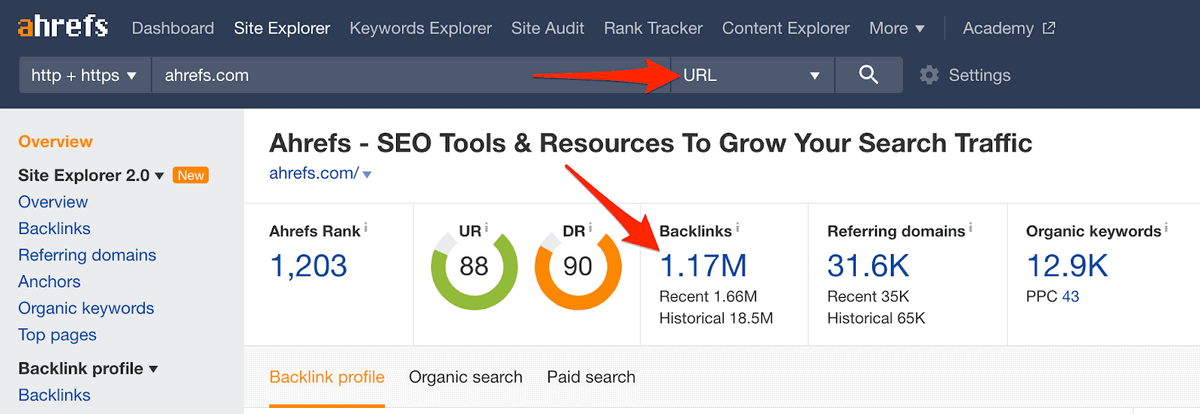
And if we look at the link profile for Backlinko, one of the biggest blogs in the SEO niche, we can see that their massive list of Google ranking factors is one of their most linked-to pages.
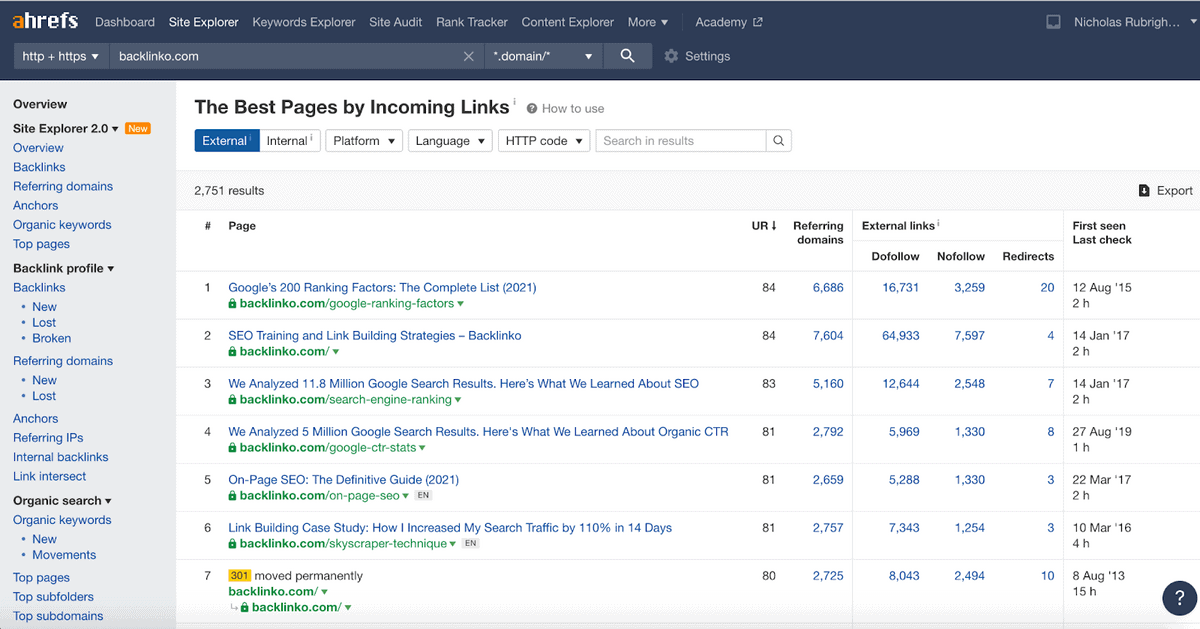
However, if we examine the link profiles of the pages ranking for the keyword “link building services,” we get a bit of a reality check.
These pages usually don’t have that many links to begin with. Take a look at the link profile of this competing “link building services” page that ranks pretty well in Google. It has 896 backlinks from 241 referring domains to their homepage.
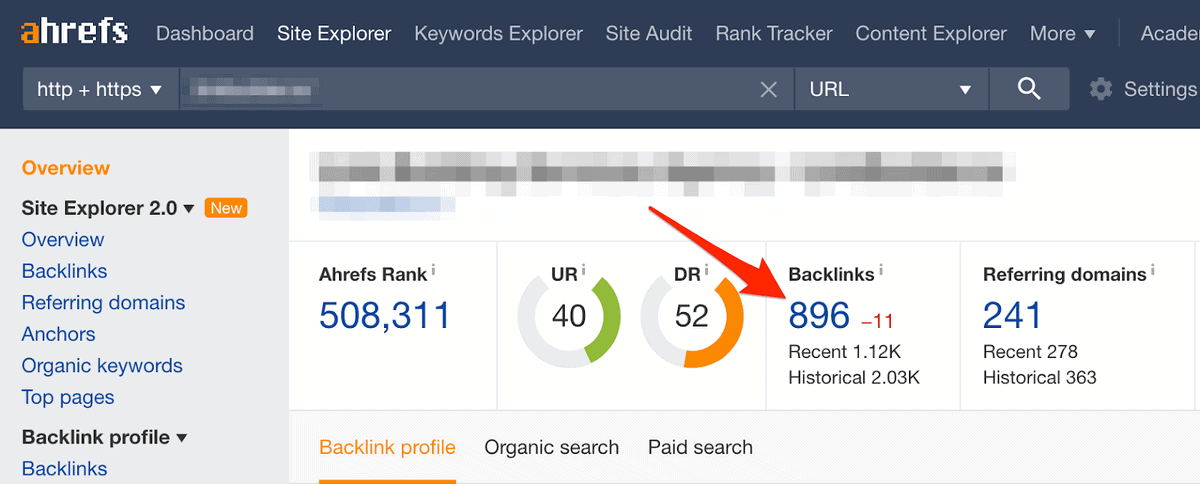
This is evidence that link building service pages have little-to-no link demand in our niche, but content pieces and tools have lots of link demand.
So if we want to run an outreach-driven campaign, we need to build content that’s designed to appeal to the people who link.
Otherwise, if we want to build links to our link building services page with very specific anchor text, we’re stuck with something like guest posting where the value proposition to the sites we’re pitching is free content.
This isn’t necessarily bad. In fact, most pages on the internet have no link demand.

This isn’t to say that guest posting is bad. It definitely works! This is more of a note to point out that we can’t create artificial demand for your page because we want backlinks.
Instead, we need to invest in creating content for our prospects to then publish themselves if we want to win your backlink placement.
Takeaway: In some cases, giving us very specific URL and anchor text requirements limits the techniques we’re able to use to get backlinks because there may be no link demand for your page.
2. Specific SEO metric requirements
Adding more SEO requirements reduces the number of links we’re able to get from your campaign because we’re removing outreach targets from our list as we work.
Let me explain while following the prospecting methodology laid out in my article about buying backlinks.
Let’s say we’re trying to reach out to sites that link to this article about content marketing to pitch them something we made.
At the very start of our prospecting efforts, we see that there are around 5,800 domains linking to this page over 14,000 times.
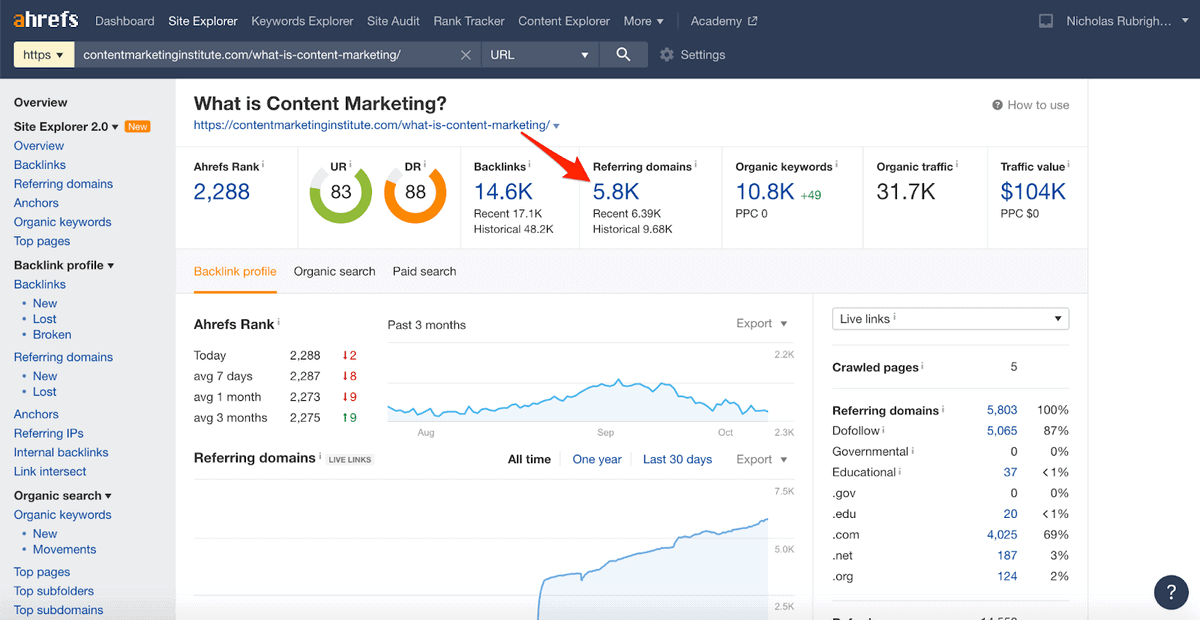
However, we need to add some standard filters.
We don’t want to go after nofollow links, so we only want to target domains linking to this page that are using dofollow links.
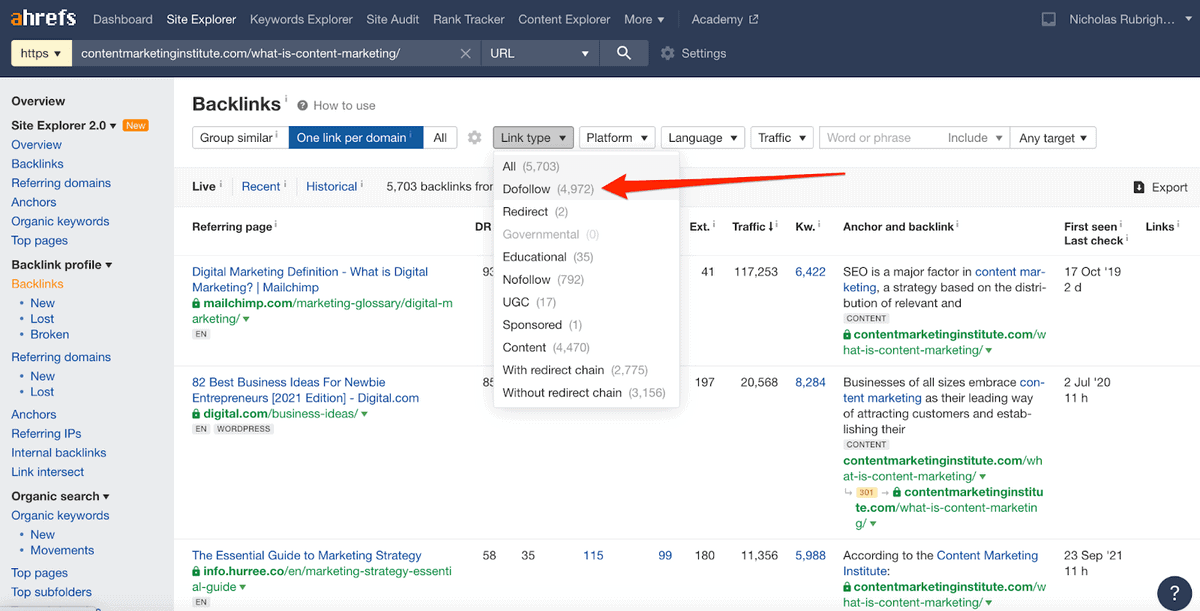
This reduces our outreach targets to less than 5,000, but it’s a necessary step as nofollow links are useless for SEO.
I usually don’t watch DR too much and just train my team to use their eyes, but because clients don’t like low-DR links and neither does upper-management, we often target DR 20+ links at the start.
To do this, we simply export the list and remove any sites with a DR of under 20.
Now we have 2,636 rows in our list.
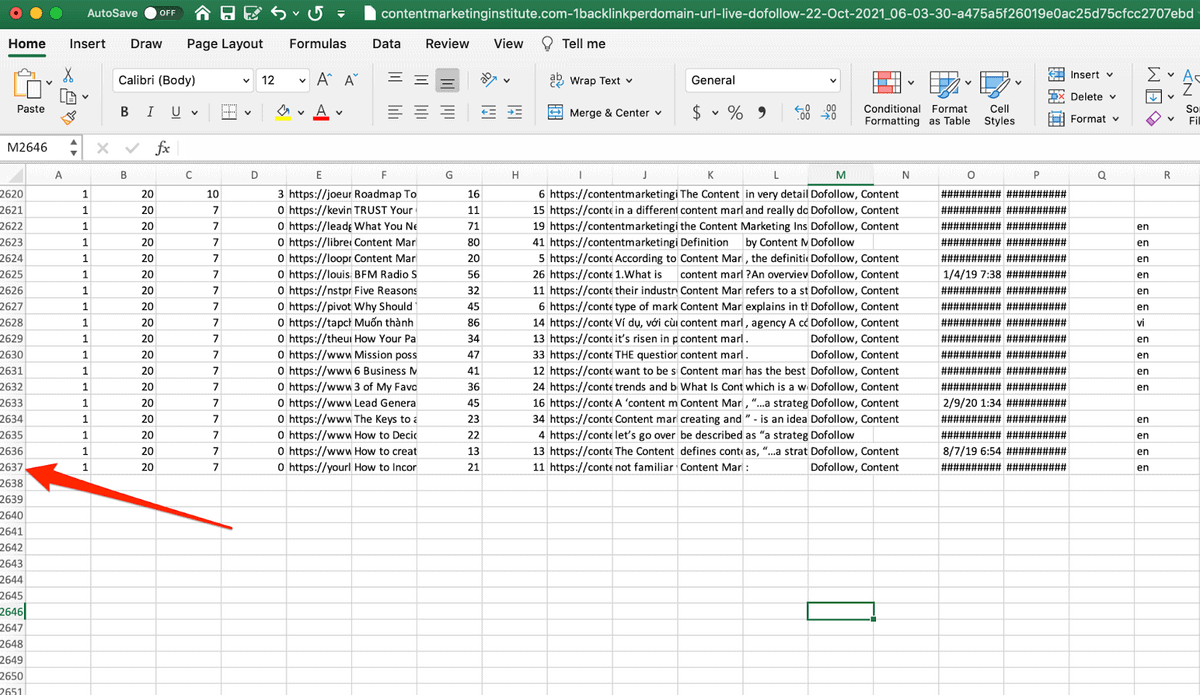
If we include only DR 80+ linking domains, the list shrinks all the way down to 165 rows!
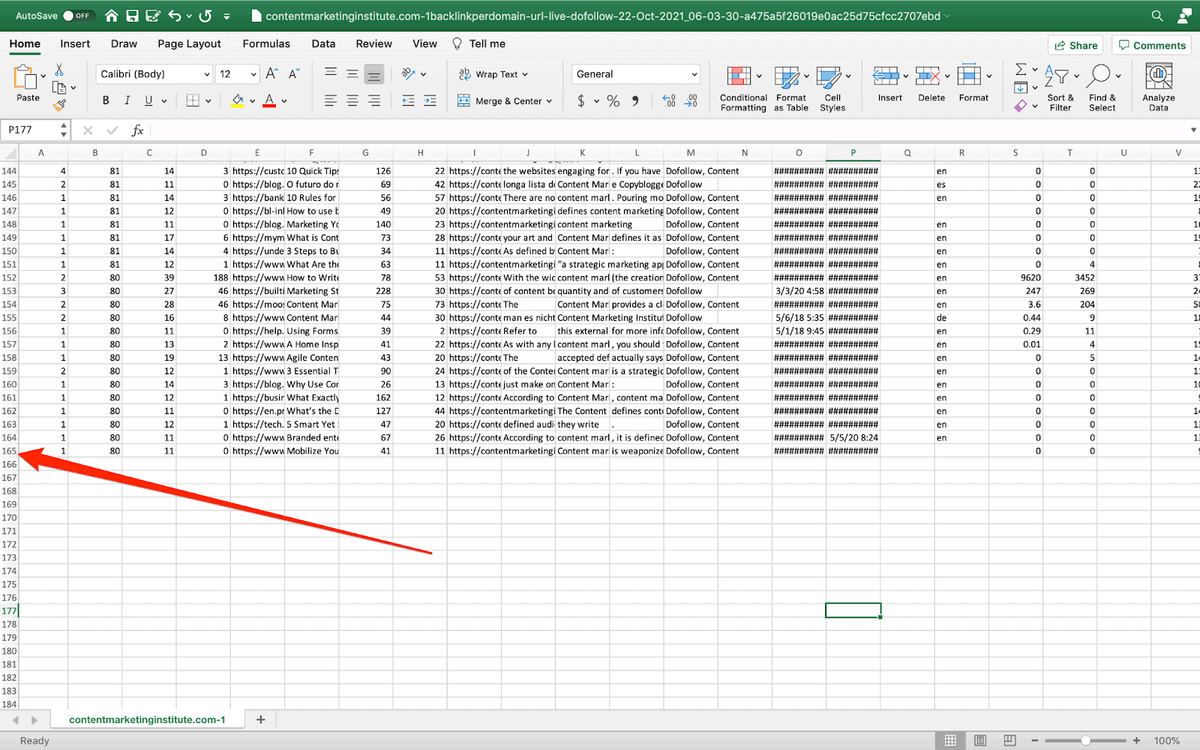
That’s a pretty significant cut to our prospect list. It usually doesn’t make much sense to do this because we can use the experiences with smaller prospects to tweak campaign performance.
Not only that, but a natural link profile consists of low DR links too.
Takeaway: Most prospect lists are acquired in a similar way, whether through competing pages, keyword ideas, or fancy Google search operators. In any case, finding these initial prospect batches takes a significant amount of time, so as we add filters to these lists that shrink them, more time needs to be spent on finding prospects.
3. Completely avoiding all competing domains
Look, competitors do link to each other.
Ahrefs and Semrush are competing products, but Ahrefs links to Semrush’s site three times from theirs.
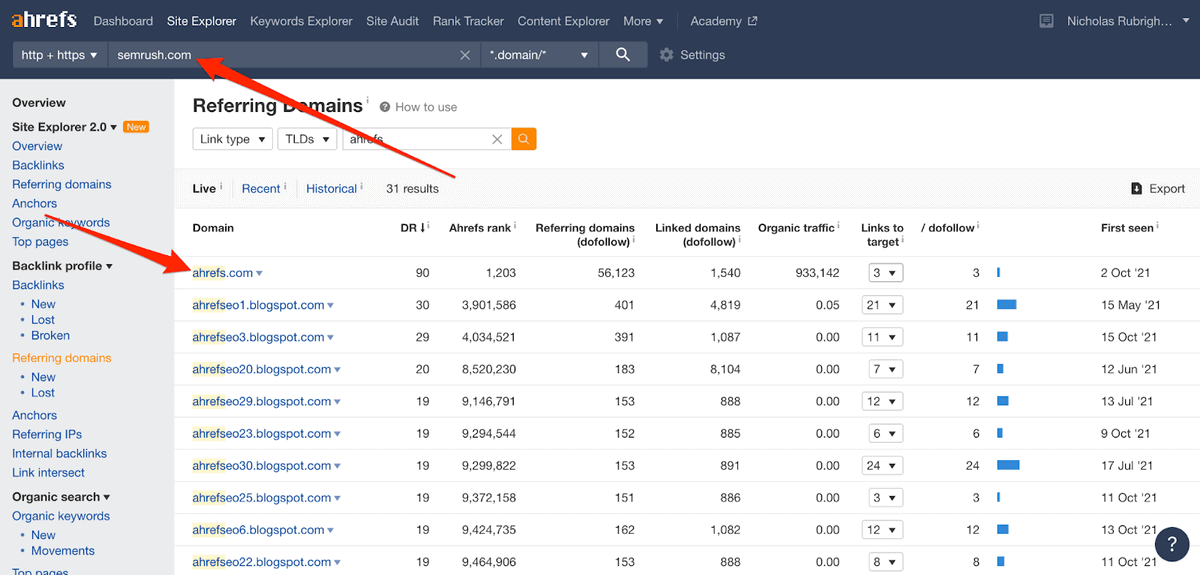
That said, pitching your link to your direct competitors is a little far-fetched. It makes sense to filter out direct competitors, which is why it’s great when clients send us a list of these in advance.
However, the reality is, if you’re doing link building and targeting sites in your niche, you’re probably going to run into lots of sites that offer similar products and services, and a lot of the time it just isn’t efficient to take the extra steps to remove these from the list.
We usually find our prospects through their content rather than their sales pages. This is because content pieces link out a lot and sales pages don’t.
Takeaway: If we have to check every prospect to make sure they’re not a competitor, this is going to take a significant amount of time and will reduce the number of prospects we’re able to get with the time spent on the work.
4. Being too picky with relevance
Relevance is often misunderstood.
Many marketers think of relevance as a niche thing, but it’s really a link thing.
For example, this page from a video contest website linked to my music copyright article because their participants needed information on how to legally use music.
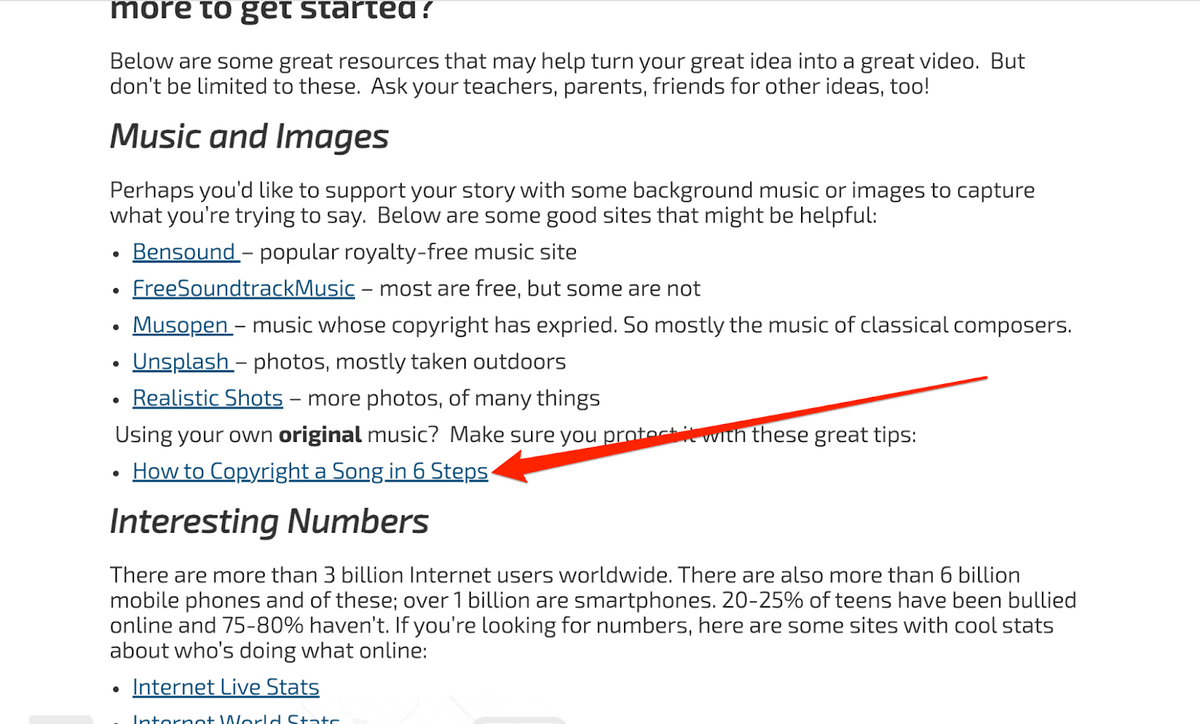
Is the link in the music niche?
No.
Does the link help the audience of this page?
Yes.
Therefore, the link is relevant.
Don’t be too concerned with the niche relevance of a link. If your link fits within the content of the page it’s on and is truly helpful to the audience, it has contextual relevance.
Allowing us to target more niches that are related to your industry opens up lots of potential for link building outreach targets that we otherwise may not be able to work with.
Takeaway: Limiting your outreach efforts to a particular niche in an effort to target relevance can result in very static cost-per-link metrics and can make it difficult to scale your campaign once we’ve covered your niche.
5. Putting any sort of limitation on guest posts
The most common limitation clients like to put on guest posting is the subject matter of the content we’re allowed to write for the websites we’re pitching.
When we pitch guest posts to sites, we do so by finding article ideas that they’re likely to respond to.
When they say they want us to write, we write the content on their terms.
If we put limitations on the subject matter we’re allowed to write about or how we’re allowed to link to you, it can seriously hinder our ability to find guest post topics that sites are going to be interested in.
Takeaway: If we’re running a guest posting campaign, it’s best to let us come up with ideas using the research methods we have in place. We designed these to come up with ideas that are likely to be accepted by the sites we’re pitching.
Conclusion
Prospecting is a super important part of the link building process. Finding lots of prospects and being able to continue to do so is extremely important in creating a link building campaign that can scale.
This article isn’t meant to say that you shouldn’t set these types of requirements at all, but it’s just important to keep in mind how certain requests can impact your link building KPIs.
If you think we missed something here or need some clarification, drop a question in the comments below.
